SOUTH GEORGIA EXPLORER
__________________
__________________
| Day | Place | Highlights |
|---|---|---|
| 1 | Ushuaia | Embark from the southern-most city in the world |
| 2 - 3 | At Sea | Relax, unwind and keep an eye out for the multitude of sea birds following the ship |
| 4 | Shag Rocks | Feeding grounds for numerous birds and whales |
| 5 - 10 | South Georgia | See South Georgia's abundance of wildlife at sites including Gold Harbour, Fortuna Bay and Salisbury Plain |
| 11 - 14 | At Sea | Crossing the Drake Passage, watch for seabirds and marine life |
| 15 | Ushuaia, Argentina | After breakfast, disembark the ship with your invaluable memories |
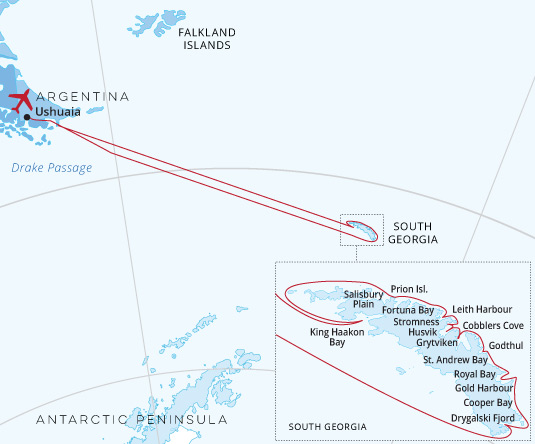
The Plancius accommodates up to 108 passengers in 53 passenger cabins all with private ammenitiies. Built in 1976 as an oceanographic research vessel for the Royal Dutch Navy she sailed for the Navy until 2004 when she was used as an expedition vessel. Completely rebuilt in 2009 and later upgrades in 2019, the complies with the latest SOLAS-regulations. Offering a restaurant/lecture room on deck 3, a spacious observation lounge with large windows and a bar on deck 5 and a library on deck 5there is no shortage of places to relax. There are large open deck spaces on the Plancius, especially on Deck 4 with full walk-around possibilities for optimal wildlife spotting and enjoying the scenery. The Plancius carries 10 Mark V zodiacs, with 40 HP 4-stroke outboard engines and 2 gangways on the starboard side, guaranteeing a swift zodiac operation. Whilst the Plancius is comfortable and well equipped, she is in no way a luxury vessel. The focus is in spending as much time on shore as possible with an exploratory educational travel programme with 8 highly knowledgeable expedition staff.
The Ortelius was originally the Marina Svetaeva. Built in Gdynia, Poland in 1989, it served as a special-purpose vessel for the Russian Academy of Science. Later it was re-flagged and renamed after the Dutch/Flemish cartographer Abraham Ortelius, who in 1570 published the first modern world atlas: Theatrum Orbis Terrarum or Theatre of the World. The Ortelius can accommodate 108 guests and has an abundance of open-deck spaces for watching wildlife and the impressive scenery as you sail past. She also has the highest ice-class notation (UL1, equivalent to 1A) making her perfect for polar expeditions.
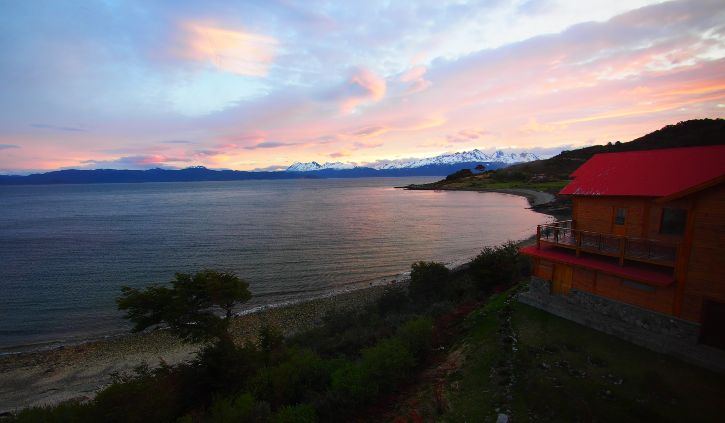
Your voyage begins where the world drops off. Ushuaia, Argentina, reputed to be the southernmost city on the planet, is located on the far southern tip of South America. Starting in the afternoon, you embark from this small resort town on Tierra del Fuego, nicknamed “The End of the World,” and sail the mountain-fringed Beagle Channel for the remainder of the evening.
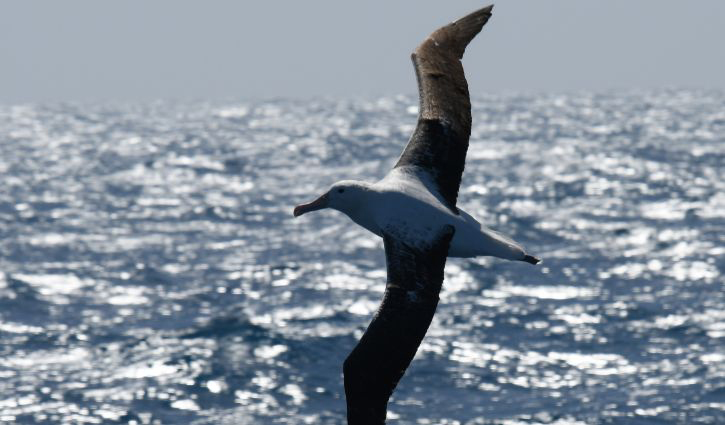
Spend this day at sea bird watching as several species of albatross follow the ship into the westerlies, along with storm petrels, shearwaters, and diving petrels.
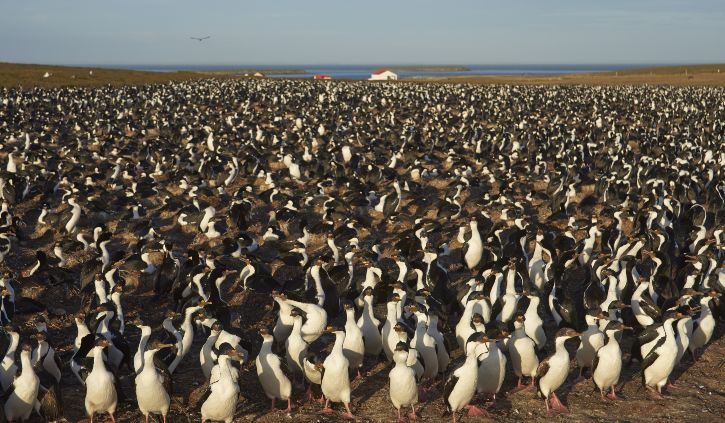
Today you reach the Shag Rocks, a group of six islands surrounded by nutrient-rich waters that offer great feeding grounds for numerous birds and whales. The islands are named after the South Georgian shag, known for its bright blue eyes and yellow beak patch.
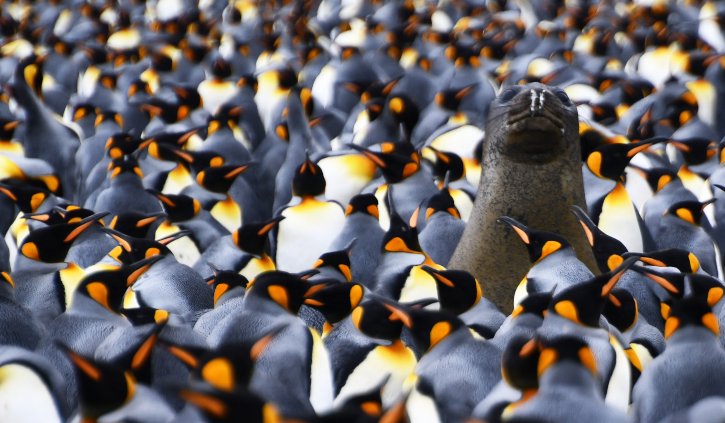
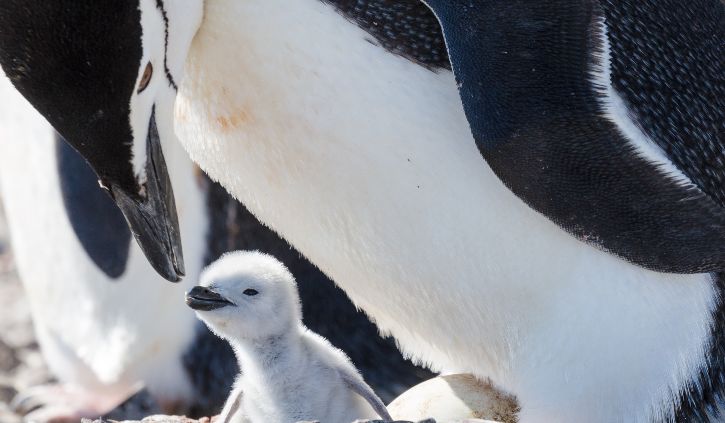
Today you arrive at the first South Georgia activity site. Please keep in mind that weather conditions in this area can be challenging, largely dictating the program.
Sites you might visit include:
Salisbury Plain, St. Andrews Bay, Gold Harbour – These sites not only house the three largest king penguin colonies in South Georgia, they’re also three of the world’s largest breeding beaches for southern elephant seals. Only during this time of year do they peak in their breeding cycle. Watch the four-ton bulls keep a constant vigil (and occasionally fight) over territories where dozens of females have just given birth or are about to deliver. You can also see a substantial number of Antarctic fur seals here.
Fortuna Bay – A beautiful outwash plain from Fortuna Glacier is home to a large number of king penguins and seals. You may have the chance to follow the final leg of Shackleton’s route to the abandoned whaling village of Stromness. This path cuts across the mountain pass beyond Shackleton’s Waterfall, and as the terrain is partly swampy, be prepared to cross a few small streams.
Leith Harbour, Stromness, Husvik – These sites remind us of the scale of the whaling industry in the early 20th century. Elephant and fur seals breed and moult here. Gentoo penguins also occupy the landing sites. Antarctic prions and South Georgia dive petrels may be observed, especially in the area of Husvik.
Grytviken – In this abandoned whaling station, king penguins walk the streets and elephant seals lie around like they own the place – because they basically do. Here you might be able to see the South Georgia Museum as well as Shackleton’s grave.
Cobblers Cove, Godthul – At Cobblers Cove we aim for Rookery Point to see macaroni penguins. Light-mantled sooty albatrosses nest along the coastline and giant petrels can be observed as well. Godthul (Norwegian for “good cove”) was named by Norwegian whalers and seal-hunters and remains such as bones can still be found along the shore line. Beaches are the home of gentoo penguins and seals.
Royal Bay (Moltke Harbour, Will Point & Brisbane Point) – Moltke harbour in Royal Bay was named by the German International Polar Year Expedition in 1882 and some of the remains of their dwellings are still visible. The scenery of Royal Bay is beautiful, dark sandy beaches, followed by the green tussock colors and finally dominated by the snow and ice covered Ross Glacier. Royal Bay one of the windiest bays on the island, zodiac cruising is spectacular. Approx. 30,000 pairs of king penguins live here.
Cooper Bay – Offers the largest chinstrap penguin population and gentoo and also macaroni penguins are present. Antarctic terns, white-chinned petrels, blue-eyed shags and light-mantled sooty albatrosses can be spotted too.
Drygalski Fjord – offers spectacular landscapes as the ships sails the narrow fjord, with ca. 2 kilometer high mountain peaks at a very close distance.
King Haakon Bay – British explorer Ernest Shackleton reached King Haakon Bay during his journey of 800 sea-miles by open boat “James Caird” from Elephant Island. From here he crossed to Stromness to ask for help to rescue his party at Elephant Island after they had left the Weddell Sea where their ship got crushed by ice. Elephant seals dominate the beaches. Birdwatchers will look out for South Georgia pipits, Antarctic prions as well as common diving and blue petrels.
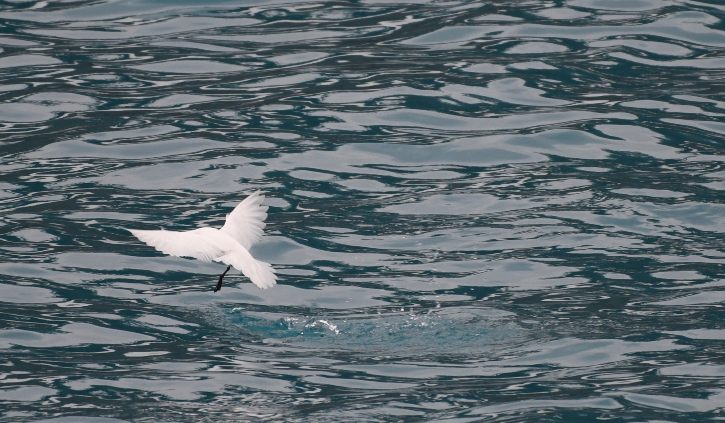
There may be sea ice on this route, south polar skuas and snow petrels could join the other seabirds such as albatrosses and petrels trailing the vessel. Eventually we reach the Drake Passage and you’re again greeted by the vast array of seabirds remembered from the passage south.
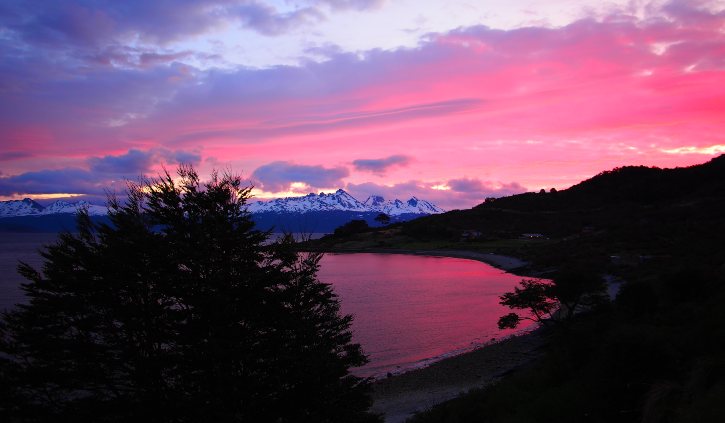
Every adventure, no matter how grand, must eventually come to an end. It’s now time to disembark in Ushuaia, but with memories that will accompany you wherever your next adventure lies.
To make the most of your time in South America we can tailor a holiday to Patagonia to suit your voyage dates. If you have a bit more time we can create a tailor-made itinerary to some of the highlights of South America. Take a look at the Patagonia sample itineraries below and contact us to begin creating your perfect holiday.
18 Days
4 Days
5 Days